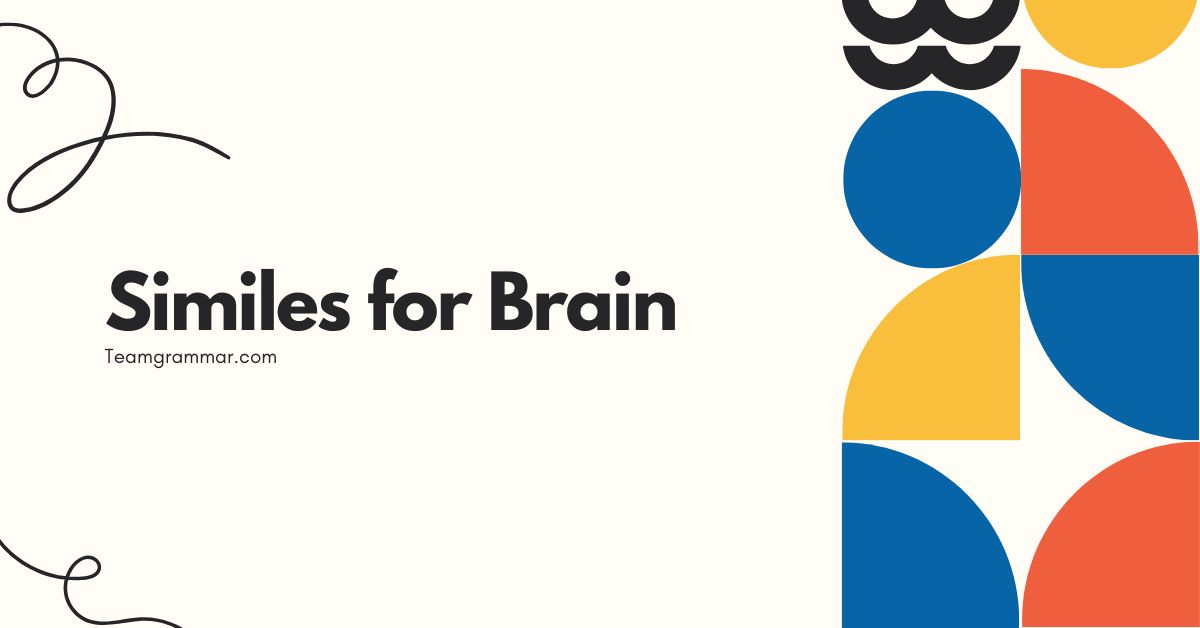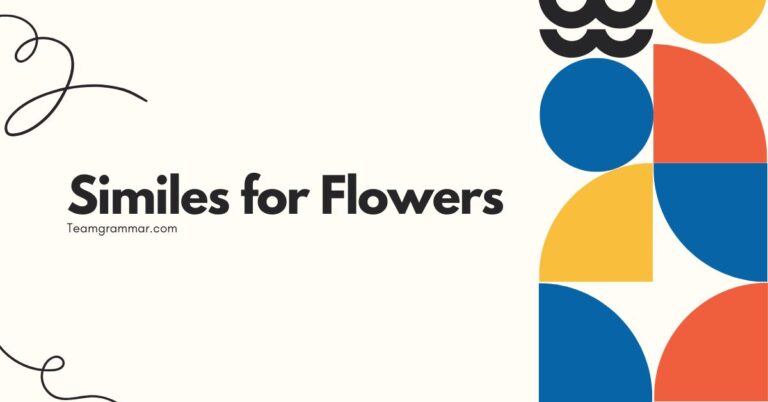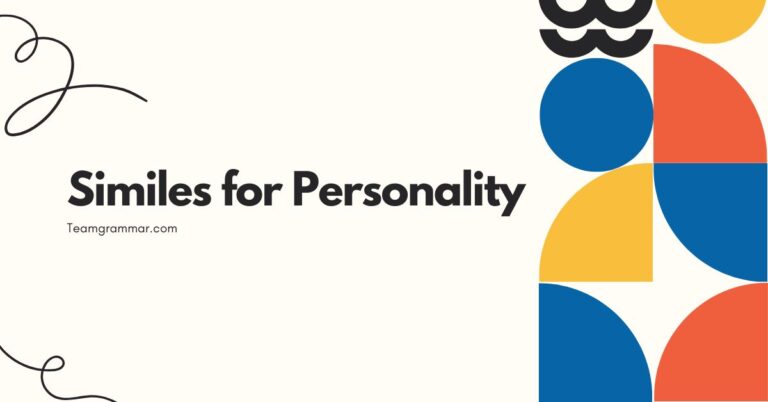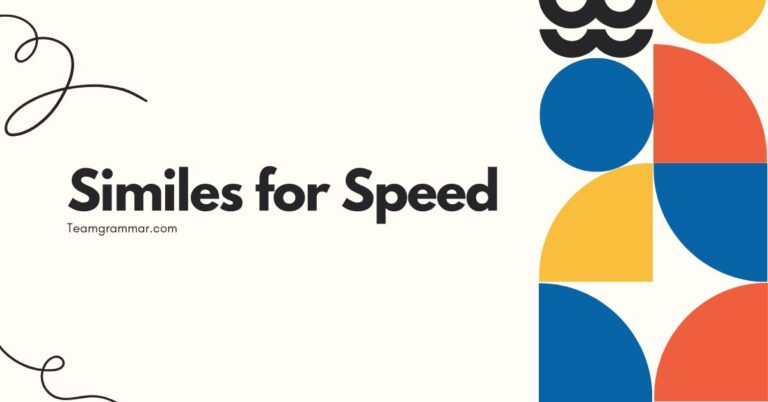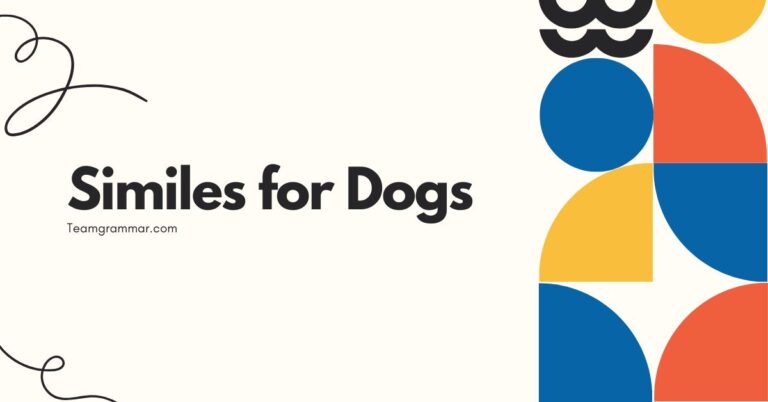43 Similes for Brain: Enhancing Your Descriptive Language
Understanding similes is crucial for enriching your descriptive language and making your writing more vivid and engaging. Similes, a type of figurative language, allow you to draw comparisons between seemingly unrelated things, adding depth and color to your communication.
This article provides a comprehensive guide to similes, focusing specifically on those used to describe the brain, its functions, and its characteristics. Whether you are a student, writer, or simply someone looking to improve your vocabulary, this guide will equip you with the knowledge and tools to effectively use similes in your writing and speech.
By exploring various examples, structural breakdowns, and usage rules, you will gain a solid understanding of how to craft compelling and imaginative similes related to the brain. This understanding will not only enhance your descriptive abilities but also deepen your appreciation for the nuances of the English language.
Let’s dive into the fascinating world of similes and unlock the power of figurative language to describe the most complex organ in the human body.
Table of Contents
- Definition of Simile
- Structural Breakdown of Similes
- Types of Similes
- Examples of Similes for Brain
- Usage Rules for Similes
- Common Mistakes with Similes
- Practice Exercises
- Advanced Topics: Extended Similes and Metaphors
- Frequently Asked Questions
- Conclusion
Definition of Simile
A simile is a figure of speech that directly compares two different things using the words “like” or “as.” The purpose of a simile is to create a vivid and imaginative description by highlighting the similarities between the two unlike objects or concepts. Similes are a powerful tool for writers and speakers to make their language more engaging, memorable, and impactful.
Similes fall under the broader category of figurative language, which includes metaphors, personification, and hyperbole, among others. Unlike a metaphor, which states that one thing is another, a simile acknowledges the comparison through the explicit use of “like” or “as.” This distinction is crucial in understanding how similes function and how they differ from other figures of speech.
The function of a simile is to enhance understanding and create a more sensory experience for the reader or listener. By drawing a comparison, the writer or speaker can evoke specific images, emotions, or ideas, making the description more relatable and impactful.
Similes are used in various contexts, from literature and poetry to everyday conversation and advertising.
Structural Breakdown of Similes
The basic structure of a simile consists of three key elements: thesubject, thelinking word(“like” or “as”), and thereferent. The subject is the thing being described or compared, while the referent is the thing to which it is being compared.
The linking word establishes the relationship between the subject and the referent.
The formula for a simile can be represented as follows: Subject + Linking Word + Referent. For example, in the simile “The brain is like a computer,” the brain is the subject, “like” is the linking word, and a computer is the referent.
Understanding this structure is essential for creating effective and clear similes.
The effectiveness of a simile depends on the clarity and relevance of the comparison. A strong simile should draw a meaningful connection between the subject and the referent, highlighting a specific quality or characteristic that they share.
The comparison should also be easily understandable and relatable to the audience.
Types of Similes
Similes can be categorized based on the type of comparison they make or the effect they create. Here are some common types of similes:
Descriptive Similes
Descriptive similes focus on physical characteristics or qualities. These similes aim to paint a vivid picture in the reader’s mind by comparing the subject to something with similar attributes.
For example, “The brain was as wrinkled as a prune” is a descriptive simile that emphasizes the physical appearance of the brain.
Functional Similes
Functional similes compare the way something works or operates. These similes highlight the similarities in the function or purpose of the subject and the referent.
For example, “The brain works like a complex switchboard” is a functional simile that emphasizes the brain’s role in processing and routing information.
Emotional Similes
Emotional similes evoke feelings or emotions by comparing the subject to something that elicits a similar emotional response. These similes are often used to create a specific mood or atmosphere.
For example, “His brain felt like a tangled mess of anxiety” is an emotional simile that conveys a feeling of stress and confusion.
Abstract Similes
Abstract similes compare abstract concepts or ideas. These similes are often used to explain complex or intangible concepts in a more relatable way.
For example, “Understanding the brain is like exploring a vast, uncharted territory” is an abstract simile that emphasizes the complexity and unknown aspects of brain research.
Examples of Similes for Brain
Here are several examples of similes that can be used to describe the brain, categorized for clarity:
Descriptive Similes
These similes focus on the physical attributes of the brain.
| Simile | Explanation |
|---|---|
| The brain is like a wrinkled walnut. | Emphasizes the brain’s convoluted surface. |
| The brain is as gray as a stormy sky. | Describes the brain’s color. |
| The brain is like a soft, delicate sponge. | Highlights the brain’s texture and fragility. |
| The brain is as heavy as a small melon. | Provides a sense of the brain’s weight. |
| The brain is like a network of intricate roots. | Emphasizes the interconnectedness of brain structures. |
| Her brain felt like a scrambled egg after the accident. | Describes the disorganized state of the brain after trauma. |
| His brain was as dense as a neutron star when trying to understand quantum physics. | Exaggerates the feeling of mental overload. |
| The brain’s surface is as smooth as silk in some areas. | Contrasts the smoothness of certain regions. |
| The brain is like a complexly folded map. | Illustrates the intricate structure of the brain. |
| The injured brain was as fragile as spun glass. | Emphasizes the vulnerability of an injured brain. |
| The healthy brain is as resilient as a rubber band. | Highlights the ability of the brain to recover. |
| The aging brain is like an old, well-worn book. | Describes the accumulated experiences and potential wear. |
| The brain’s ventricles are like hidden chambers. | Compares the ventricles to enclosed spaces. |
| The brain’s lobes are as distinct as separate continents. | Emphasizes the distinct functions of each lobe. |
| The brain’s neurons are like tiny, sparkling lights. | Illustrates the activity and communication of neurons. |
| The brain is as mysterious as a labyrinth. | Highlights the complexity and unknown aspects. |
| The developing brain is like a rapidly growing plant. | Emphasizes the growth and development process. |
| The brain is as delicate as a flower. | Illustrates the fragility of the organ. |
| The human brain is like a vast universe. | Emphasizes the immense complexity and potential. |
| The brain felt like a throbbing drum after the migraine. | Describes the sensation of pain and pressure. |
| The brain is as adaptable as a chameleon. | Highlights the brain’s plasticity and ability to change. |
| The brain’s structure is like a finely tuned instrument. | Illustrates the precision and intricacy of its components. |
| The brain is as vital as the heart. | Emphasizes the critical importance of the brain. |
| The brain is like a silent observer. | Portrays the brain as a constant, watchful presence. |
Functional Similes
These similes focus on how the brain works and its functions.
| Simile | Explanation |
|---|---|
| The brain works like a complex computer. | Highlights the brain’s information processing capabilities. |
| The brain functions as a central command center. | Emphasizes the brain’s role in controlling the body. |
| The brain is like a switchboard, routing information. | Illustrates how the brain manages communication pathways. |
| The brain operates as a sophisticated network server. | Highlights its ability to store and retrieve information. |
| The brain works like a well-oiled machine. | Emphasizes the efficiency and precision of brain functions. |
| His brain processed information as fast as a supercomputer. | Illustrates the speed of cognitive processing. |
| The brain is like a GPS, always navigating our way. | Highlights the brain’s role in spatial awareness and orientation. |
| The brain works as a filter, sorting through sensory input. | Emphasizes the brain’s ability to prioritize information. |
| The brain is like a conductor, orchestrating bodily functions. | Illustrates the brain’s role in coordinating complex processes. |
| The brain acts as a storage unit, like an external hard drive. | Highlights the brain’s memory capacity. |
| The brain functions like a central processing unit, managing all tasks. | Illustrates the brain’s core role in task management. |
| The brain works like a translator, converting signals into understanding. | Emphasizes the brain’s role in interpreting sensory information. |
| The brain operates as a regulator, maintaining balance in the body. | Highlights the brain’s role in homeostasis. |
| The brain is like a project manager, coordinating different activities. | Illustrates the brain’s ability to manage multiple tasks simultaneously. |
| The brain works as a storyteller, weaving narratives from experiences. | Emphasizes the brain’s role in constructing memories and personal identity. |
| The brain is like an engine, driving our thoughts and actions. | Highlights the brain’s role in initiating and sustaining activity. |
| The brain works as a mediator, resolving conflicts between different desires. | Illustrates the brain’s role in decision-making and conflict resolution. |
| The brain works like a detective, piecing together clues to solve problems. | Emphasizes the brain’s role in critical thinking and problem-solving. |
| The brain functions as a guardian, protecting us from harm. | Highlights the brain’s role in safety and survival. |
| The brain is like a control panel, adjusting settings to optimize performance. | Illustrates the brain’s role in adaptation and regulation. |
| The brain operates as a laboratory, experimenting with new ideas and solutions. | Highlights the brain’s role in creativity and innovation. |
| The brain is like a library, storing vast amounts of information. | Emphasizes the brain’s capacity for knowledge and memory. |
| The brain functions as a sculptor, shaping our perceptions of reality. | Illustrates the brain’s role in constructing our understanding of the world. |
| The brain is like a gardener, pruning away unnecessary connections. | Highlights the brain’s role in learning and refinement. |
| The brain works as a composer, creating beautiful harmonies of thought and feeling. | Emphasizes the brain’s role in creativity and emotional expression. |
Emotional Similes
These similes evoke emotions related to the brain’s state or condition.
| Simile | Explanation |
|---|---|
| His brain felt like a tangled mess of anxiety. | Conveys a feeling of stress and confusion. |
| Her brain was as clear as a mountain stream after meditation. | Describes a state of mental clarity and peace. |
| His thoughts raced through his brain like a runaway train. | Emphasizes the speed and uncontrollability of thoughts. |
| Her brain felt like it was wrapped in cotton after the medication. | Describes a feeling of mental fogginess and detachment. |
| His brain was as sharp as a tack when solving the puzzle. | Highlights mental acuity and focus. |
| Her brain felt like it was on fire during the intense debate. | Describes a state of mental agitation and intensity. |
| His thoughts churned in his brain like a stormy sea. | Conveys a feeling of emotional turmoil and unrest. |
| Her brain felt as light as a feather after the good news. | Describes a feeling of relief and happiness. |
| His brain was like a pressure cooker, ready to explode with frustration. | Emphasizes the build-up of tension and anger. |
| Her brain felt like a blank canvas, ready for new ideas. | Describes a state of openness and creativity. |
| His brain felt like a weightless cloud, drifting aimlessly. | Conveys a sense of detachment and lack of focus. |
| Her thoughts swirled in her brain like leaves in the wind. | Describes a feeling of confusion and disarray. |
| His brain felt like a tightly wound spring, ready to unleash. | Emphasizes a state of pent-up energy and anticipation. |
| Her brain felt as numb as ice after the traumatic event. | Describes a state of emotional detachment and shock. |
| His thoughts echoed in his brain like whispers in a cave. | Conveys a sense of introspection and reflection. |
| Her brain felt like a garden, blooming with new ideas. | Describes a state of creativity and growth. |
| His brain was as still as a pond after the storm. | Highlights a feeling of peace and tranquility. |
| Her thoughts raced through her brain like shooting stars. | Emphasizes the speed and brilliance of ideas. |
| His brain felt like a labyrinth, filled with dead ends. | Conveys a sense of confusion and frustration. |
| Her brain was as bright as a beacon, guiding her decisions. | Describes a state of clarity and guidance. |
| His brain felt like a cage, trapping his thoughts inside. | Conveys a sense of confinement and restriction. |
| Her thoughts flowed through her brain like a gentle river. | Describes a state of calm and ease. |
| His brain felt like a battlefield, with conflicting ideas clashing. | Emphasizes internal conflict and struggle. |
| Her brain was as clear as glass, allowing her to see the truth. | Describes a state of clarity and understanding. |
| His thoughts danced in his brain like fireflies on a summer night. | Conveys a sense of wonder and delight. |
Abstract Similes
These similes compare abstract concepts related to the brain.
| Simile | Explanation |
|---|---|
| Understanding the brain is like exploring a vast, uncharted territory. | Emphasizes the complexity and unknown aspects of brain research. |
| Learning about the brain is like peeling back layers of an onion. | Highlights the complexity and depth of the subject. |
| Memory is like a fragile thread, easily broken. | Emphasizes the vulnerability of memories. |
| Consciousness is like a fleeting dream, elusive and transient. | Describes the ephemeral nature of awareness. |
| Intelligence is like a multifaceted gem, reflecting different angles of knowledge. | Highlights the diverse aspects of intelligence. |
| The human brain is like a garden, requiring constant nurturing to flourish. | Emphasizes the need for stimulation and care. |
| Studying the brain is like deciphering an ancient code. | Highlights the challenge and complexity of neuroscience. |
| The mind is like a vast ocean, full of hidden depths and mysteries. | Emphasizes the limitless potential of the mind. |
| The brain is like a musical instrument, requiring tuning and practice to perform well. | Highlights the need for training and refinement. |
| Learning is like building a skyscraper, layer upon layer. | Emphasizes the gradual and cumulative nature of knowledge acquisition. |
| The brain is like a symphony, with different parts working in harmony. | Illustrates the coordinated function of different brain regions. |
| Creativity is like a spark, igniting new ideas and innovations. | Highlights the transformative power of creative thinking. |
| The brain is like a map, guiding us through the world. | Emphasizes the brain’s role in navigation and orientation. |
| Intuition is like a whisper, guiding us towards the right decision. | Highlights the subtle influence of gut feelings. |
| The brain is like a sculptor, shaping our perceptions of reality. | Illustrates the brain’s role in constructing our understanding of the world. |
| Wisdom is like a lighthouse, guiding us through the storms of life. | Emphasizes the guiding and illuminating power of wisdom. |
| The brain is like a river, constantly flowing and changing. | Highlights the dynamic and adaptive nature of the brain. |
| Empathy is like a bridge, connecting us to others’ feelings. | Emphasizes the role of empathy in understanding and relating to others. |
| The brain is like a puzzle, with each piece essential to the whole picture. | Illustrates the interconnectedness of brain functions. |
| Curiosity is like a compass, guiding us towards new discoveries. | Highlights the driving force of exploration and learning. |
| The brain is like a mirror, reflecting our experiences and emotions. | Emphasizes the brain’s role in processing and internalizing experiences. |
| Imagination is like a playground, where anything is possible. | Highlights the limitless potential of creative thinking. |
| The brain is like a library, storing vast amounts of information. | Emphasizes the brain’s capacity for knowledge and memory. |
| Self-awareness is like a spotlight, illuminating our strengths and weaknesses. | Highlights the importance of understanding ourselves. |
| The brain is like a canvas, where we paint the story of our lives. | Illustrates the brain’s role in shaping our personal identity. |
Usage Rules for Similes
Using similes effectively requires understanding certain rules and guidelines. Here are some key considerations:
Clarity
The comparison should be clear and easily understandable. Avoid using obscure or overly complex references that may confuse the reader.
The connection between the subject and the referent should be immediately apparent.
Relevance
The comparison should be relevant and meaningful. The shared characteristic between the subject and the referent should be significant and contribute to the overall description.
Avoid making comparisons that are superficial or irrelevant.
Originality
Strive for originality in your similes. While common similes can be effective, using fresh and imaginative comparisons can make your writing more engaging and memorable.
Avoid clichés and overused phrases.
Context
Consider the context in which you are using the simile. The appropriateness of a simile depends on the tone, audience, and purpose of your writing or speech.
Choose similes that are suitable for the specific situation.
Common Mistakes with Similes
Here are some common mistakes to avoid when using similes:
Confusing Similes with Metaphors
Incorrect: The brain is a computer.
Correct: The brain is like a computer.
The first example is a metaphor, while the second is a simile. Remember to use “like” or “as” to create a simile.
Using Clichés
Incorrect: The brain is as busy as a bee.
Correct: The brain is like a bustling city, with constant activity.
Avoid overused similes that lack originality. Opt for fresher, more imaginative comparisons.
Making Inaccurate Comparisons
Incorrect: The brain is as big as a planet.
Correct: The brain is like a complex network, connecting countless pathways.
Ensure that the comparison is accurate and makes sense in the context. The first example is an exaggeration and not a meaningful comparison.
Using Unclear References
Incorrect: The brain is like a thingamajig.
Correct: The brain is like a finely tuned instrument, requiring precision and care.
Avoid using vague or undefined terms. Be specific and provide a clear reference point.
Practice Exercises
Test your understanding of similes with these exercises:
- Complete the following simile: The brain is like a __________.
- Rewrite the following metaphor as a simile: The brain is a powerful engine.
- Create a simile to describe the feeling of a headache.
- Create a simile to describe the process of learning something new.
- Identify the simile in the following sentence: His thoughts raced through his brain like a runaway train.
- Correct the following incorrect simile: The brain is a computer (simile).
- Create a simile to describe the complexity of the brain.
- Create a simile to describe the way memories are stored in the brain.
- Create a simile to describe the brain’s ability to adapt.
- Complete the following simile: Her brain was as clear as __________.
Answers:
- The brain is like a complex computer.
- The brain is like a powerful engine.
- My head feels like a drum.
- Learning is like climbing a ladder.
- His thoughts raced through his brain like a runaway train.
- The brain is like a computer.
- The brain is like a labyrinth.
- Memories are stored like files in a computer.
- The brain is as adaptable as a chameleon.
- Her brain was as clear as a mountain stream.
More practice questions:
| Question | Answer |
|---|---|
| Create a simile comparing the brain to a musical instrument. | The brain is like a finely tuned piano, capable of producing complex and beautiful melodies. |
| Create a simile describing the feeling of brain fog. | My brain felt like it was submerged in a thick fog, making it difficult to think clearly. |
| Complete the simile: “The brain’s capacity for learning is as boundless as…” | The brain’s capacity for learning is as boundless as the ocean. |
| Transform the metaphor “The brain is the control center of the body” into a simile. | The brain is like the control center of the body, directing all functions and processes. |
| Create a simile that conveys the speed of thought. | Thoughts flashed through my mind like lightning across the sky. |
| Describe the feeling of a mental block using a simile. | My mind felt like a locked door, blocking any new ideas from entering. |
| Complete the simile: “The brain’s interconnectedness is like…” | The brain’s interconnectedness is like a vast, intricate web. |
| Transform the metaphor “Memories are the building blocks of identity” into a simile. | Memories are like the building blocks of identity, shaping who we are. |
| Create a simile that describes the importance of sleep for the brain. | Sleep is like a recharge for the brain, restoring its ability to function optimally. |
| Describe the feeling of a sudden insight using a simile. | The answer came to me like a bolt from the blue, illuminating the problem. |
Advanced Topics: Extended Similes and Metaphors
For advanced learners, exploring extended similes and metaphors can further enhance their descriptive abilities. Anextended simileis a simile that is developed over several lines or sentences, providing a more detailed and nuanced comparison.
Similarly, anextended metaphoris a metaphor that is sustained throughout a longer passage, creating a deeper and more complex figurative meaning.
For example, instead of simply saying “The brain is like a computer,” an extended simile could be: “The brain is like a computer, constantly processing information, storing memories in its vast databases, and executing complex algorithms to navigate the world. Just as a computer requires regular maintenance and updates, the brain also needs proper care and stimulation to function optimally.”
These advanced techniques can add depth and richness to your writing, allowing you to create more vivid and impactful descriptions. However, it is important to use them judiciously and ensure that the comparison remains clear and relevant throughout the extended passage.
Frequently Asked Questions
- What is the difference between a simile and a metaphor?
A simile compares two things using “like” or “as,” while a metaphor directly states that one thing is another. Similes are explicit comparisons, while metaphors are implicit.
- Why are similes important in writing?
Similes enhance descriptive language, make writing more vivid and engaging, and help readers understand complex concepts by relating them to familiar things.
- How can I create effective similes?
Focus on clarity, relevance, and originality. Choose comparisons that are easily understandable, meaningful, and fresh.
- What are some common mistakes to avoid when using similes?
Avoid confusing similes with metaphors, using clichés, making inaccurate comparisons, and using unclear references.
- Can a simile be too long?
Yes, a simile can be too long if it becomes convoluted or detracts from the main point. Keep similes concise and focused.
- How do I choose the right simile for my writing?
Consider the context, audience, and purpose of your writing. Choose similes that are appropriate for the specific situation and contribute to the overall message.
- Are similes only used in literature?
No, similes are used in various contexts, including literature, poetry, everyday conversation, and advertising.
- How can similes help in understanding complex topics like neuroscience?
Similes can simplify complex concepts by relating them to familiar things, making them more accessible and understandable.
- What makes a simile more effective than a simple description?
A simile adds a layer of comparison that can evoke deeper understanding and create a more sensory experience than a straightforward description.
- How do cultural differences affect the understanding of similes?
Cultural references within similes may not be universally understood, so it’s important to consider your audience and use comparisons that are culturally relevant or easily explained.
Conclusion
Mastering the use of similes is an invaluable skill for anyone seeking to enhance their communication. By understanding the structure, types, and usage rules of similes, you can craft compelling descriptions that resonate with your audience.
This is especially useful when describing the complex workings of the brain, where analogies can greatly aid understanding and engagement. Remember to prioritize clarity, relevance, and originality in your comparisons to create the most impactful effect.
Continue practicing and experimenting with similes to develop your own unique style and voice. Pay attention to how other writers and speakers use similes effectively, and learn from their techniques.
By incorporating similes into your writing and speech, you can elevate your communication and captivate your audience with vivid and imaginative language. Keep exploring and refining your skills to unlock the full potential of similes in your descriptive arsenal.

